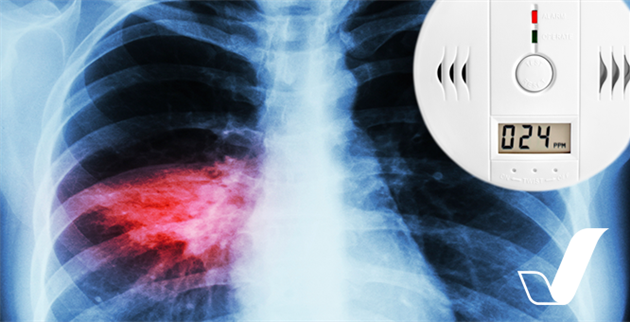Carbon Monoxide: The Silent Killer.


Carbon Monoxide - What You Need to Know
Protect yourself and your family by following these helpful safety tips!
Colorless, odorless, tasteless, but poisonous carbon monoxide (CO) often goes undetected, striking its victims without a trace. According to the Centers for Disease Control and Prevention (CDC), more than 400 Americans die from unintentional carbon monoxide poisoning every year, while nearly 20,000 people visit emergency rooms around the country for related carbon monoxide poisoning symptoms.
Severe winter weather increases the risk of CO production. With high winds or heavy snowfall, the Northeast can experience power outages or see an increase in fuel production with the use of fireplaces and furnaces to stay warm. With these heating sources turned up and without proper ventilation, carbon monoxide can build quickly to toxic levels, putting you and your family at risk!
You can prevent carbon monoxide by knowing the Do’s and Don’ts!
The CDC offers these helpful tips:
DO:
- Prior to each winter season, make sure you have your heating system serviced by a qualified technician.
- Over 1/4th of American homes do not have a CO detector! Make sure you and your family are safe by installing a battery-operated carbon monoxide detector in your home near the bedrooms. Make sure to check or replace the battery twice a year!
- While you’re shoveling outside, make sure to clear at least three-feet of snow from around your furnace, dryer vents and intake tubes outside the home to be safe.
DON’T:
- Should your CO detector ever sound, don’t assume it has malfunctioned.
- Do not run any vehicle inside a garage attached to your house, even if the door is open. Fumes can still be vented through the home!
- If the power goes out, do not heat your house with a gas oven. Alternative heating sources during a power outage exposes you and your family to CO exposure within minutes.
Most importantly, know the symptoms of CO poisoning. Seek medical attention if you or anyone in the home experiences any or all of these flu-like symptoms:
- Dizziness
- Feeling lightheaded
- Nausea
- Loss of consciousness
Like all risks in life, preparedness and awareness can mean the difference between life and death. For more information, visit
www.cdc.gov. When you live proactively, you can live assured.